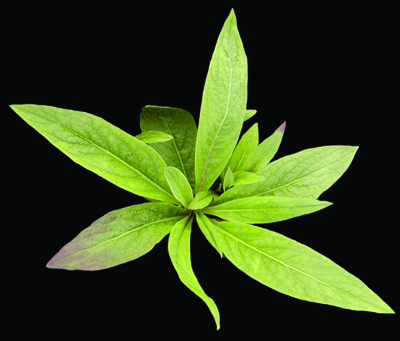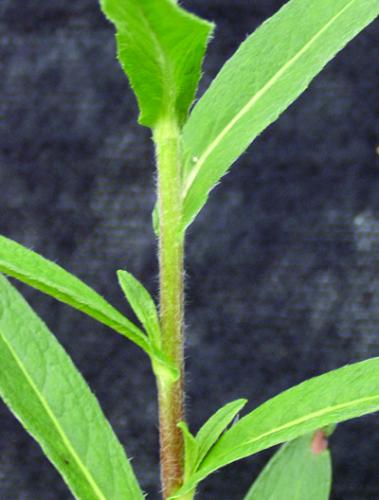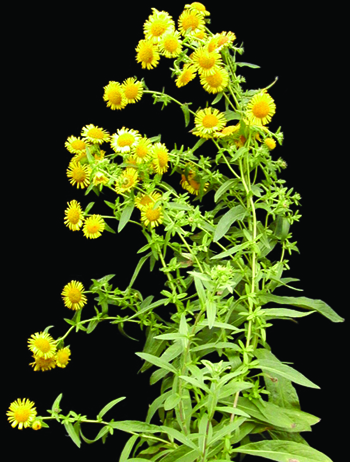British elecampane
July 31, 2015
Inula britannica L.
Life cycle
Aggressive, invasive perennial.
Leaves
Alternate, lance-shaped leaves initially develop from a basal rosette. Leaves have pointed tips, arrowhead- to earlobe-shaped bases and finely toothed margins. Leaf bases are stalkless to clasping the stem. The lower leaf surface is densely covered with coarse, white hairs; the upper surface is only slightly hairy.

British elecampane rosette.
Stems
Erect stems with coarse, white hairs arise from a basal rosette to flower, up to 30 inches tall.

British elecampane stem.
Flowers and fruit
Numerous yellow, 0.75- to 1.5-inch-wide flower heads form on a single plant, each head looking like a small sunflower. The area just below each flower head is encircled by several small, green bracts. The seed is enclosed in a single-seeded, small, light brown, wind-disseminated fruit.


British elecampane flower (left). British elecampane flowering plant (right).
Reproduction
Seeds and creeping roots.
Print a PDF of this page: British elecampane



 Print
Print Email
Email

